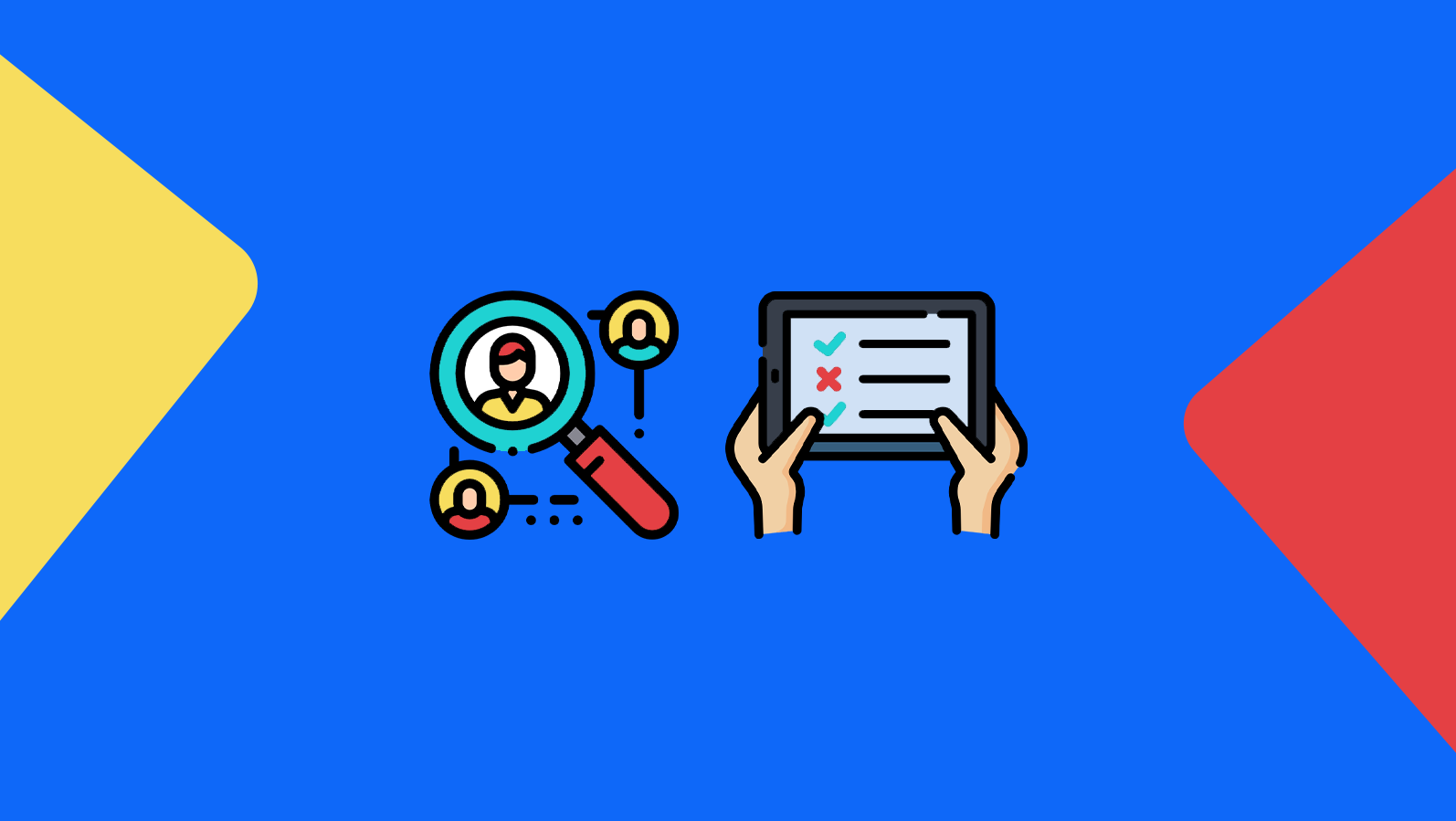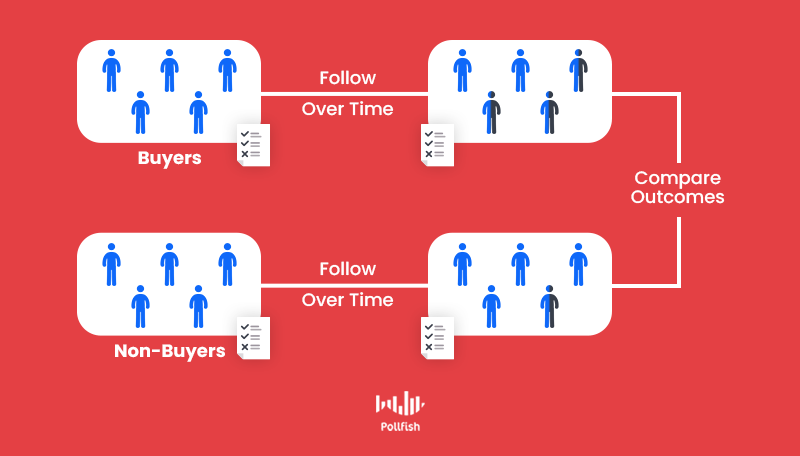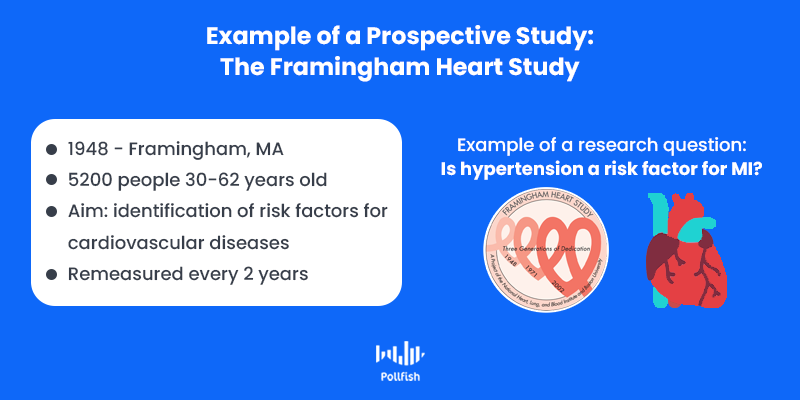Building Effective Prospective Studies with Online Surveys
Prospective studies are a powerful form of research to understand how the behaviors, attitudes, feelings, and/or physical attributes of a population develop over time.
Particularly, researchers and marketers are using prospective studies to understand outcomes more broadly. For example, perhaps a brand needs to study how a customer or customer segment developed a certain habit, whether it is favorable or unfavorable to the business.
While researchers typically have a primary objective in conducting prospective studies, the data that is collected over time may reveal factors that were not considered when outlining the study’s original objectives.
Given the large amount of data that is gathered over time, prospective studies are a treasure trove of information for researchers. While it takes time and patience to collect the data, the results of a prospective study may yield completely new or unexpected insights.
Defining Prospective Studies
Once the territory of public health researchers, prospective studies have entered a wider area of study due to the application of survey research.
Prospective studies can help understand the factors that influence anything from consumer loyalty to employee retention to customer churn.
In prospective studies, data is gathered from individuals over a period of time. The data is then analyzed with the objective of identifying associations between variables. Traditionally, prospective studies have been most strongly associated with the fields of public health and medicine.
Prospective studies fall into the broader category of cohort studies, which are used to determine how often a phenomenon occurs within a specified population. Retrospective studies are another type of cohort study but differ from prospective studies in that they investigate an outcome that occurred in the past.
In research studies, the term “cohort” refers to a group of people who share common characteristics, which help define them as part of the sample group. The defining characteristic can be:
- demographic in nature, i.e., age or location
- behavioral i.e. where consumers purchase a product or how they use a certain digital property )
- psychographic, i.e., values, opinions and inclinations.

A unique aspect of prospective studies is that researchers fully plan and design the study, recruit participants, and collect initial information before any of the participants develop remarkable outcomes. Researchers must watch and wait for outcomes to develop before they draw any conclusions.
Prospective studies were previously cumbersome to conduct due to the need to follow a group of people and collect data over longer periods of time, but the use of prospective surveys has made this type of longitudinal research more accessible to a wider variety of organizations.
Examples of Prospective Studies
Some of the most famous prospective studies have been conducted within the field of medicine. The outcomes of the studies mentioned below have helped solidify our understanding of how certain factors influence our overall health.
- The Framingham Heart Study is an ongoing study that started in 1948 with an original cohort of 5,209 healthy individuals located in the town of Framingham, MA. With the objective of identifying major cardiovascular disease risk factors, this study has fundamentally changed our understanding of cardiovascular health.

- The Nurse’s Health Study refers to two of the largest investigations into the risk factors that contribute to chronic disease in women. The studies began in 1976 and have followed a total of 280,000+ participants over three generations.
While prospective studies are particularly useful in following medical developments, they are also used to reveal deep and sometimes unexpected insights in business subsectors and other verticals. Here are some examples of scenarios in which businesses can apply prospective studies:
- Researchers want to understand how early exposure to social media influences the feelings and attitudes of young adults. They plan a 10-year study to follow a cohort of children who are 9-11 years old at the outset of the study.
- A large company decides to investigate the link between certain hiring practices and long-term employee retention. This is done by following new hires over a period of 5 years, or until they leave the company.
- A large online retailer plans a study to understand how buying behavior changes with age. Their prospective study will follow a large sample of 20 – 30-year-old customers for a period of 20 years.
- A SaaS company wants to understand how consumer loyalty changes over time. They decide to conduct a prospective study that follows anyone who signs up for their software subscription during 2021.
- A global beverage company wants to understand how health and lifestyle choices influence customer behavior. They decide to conduct a prospective study following a cohort of Millenials over 10 years to better understand their decision-making process.
Use of Surveys in Prospective Studies
Since prospective studies are often conducted over a long period of time, an important aspect of planning a prospective study is to determine how to collect and organize data during the study. In the past, the enormity of this challenge was one of the reasons why prospective studies were rarely undertaken outside of the public health sector.
The advent of online survey platforms has made it easier to conduct prospective studies and analyze the resulting data. After establishing the cohort, researchers can easily design and distribute surveys at predetermined intervals and allow the respondents to complete the surveys within an allotted period of time.
In comparison to older methods of data collection, such as phone or in-person interviews, online surveys provide a flexible and cost-effective way to interact with the cohort where and when it suits them best.
In addition, data collection is seamless, with data being automatically compiled with each survey iteration. Whereas prospective studies previously required a team that was well-versed in survey data collection and analysis, online surveys have made it possible for marketers to use prospective studies without needing to engage an outside company.
The Pros and Cons of Using Surveys in Prospective Studies
While surveys are a relatively easy way to collect data from a cohort, especially over a longer period of time, there are pros and cons to consider before choosing to use this method.
Prospective surveys are typically more cost-effective than conducting in-person phone interviews over a period of time. You may also experience a higher survey response rate by allowing the respondents to complete the survey when and where it is convenient for them.
If you decide to use an online survey platform to conduct prospective surveys, you will benefit from the ability to more easily complete, export, organize, and analyze data. This is an important consideration if you think about the large volume of data that will be collected over several months, years, or decades.
Since prospective studies are often conducted over a long period of time, the cost of data collection may be a barrier for certain organizations. The use of online surveys can help minimize this cost by reducing the need to hire specialized personnel to design the study and gather feedback.
On the other hand, there are some benefits to conducting interviews or performing physical exams. During the repeated interactions with the interviewer, the respondent may come to form a relationship that helps them feel more comfortable about answering the questions. This may allow for more honest or unexpected responses, which may not occur with the use of a survey.
Similarly, the design of a survey can greatly affect the results. With a limited set of responses, there is less flexibility to uncover unexpected or new responses. This can be avoided by including open-ended questions or text entry fields to submit additional information.
Gaining Deeper Understanding with Prospective Studies
Thanks to online survey platforms, it is possible for more organizations to benefit from the ability to gather data from their respondents over a period of time. If you are looking for a way to gain a deeper understanding of how certain factors influence the thoughts and behaviors of your customers over time, consider conducting a prospective study.
There is no denying that prospective studies take a great deal of effort to plan and manage, but the results of this type of study can lead to completely new insights and understanding of your target market
This allows you to innovate on your offerings, personalize your customer experience (CX) and foster stronger marketing efforts, all of which will help scale your business.
Frequently asked questions
What is a prospective study?
A prospective study is a longitudinal cohort study that studies a group of similar respondents with only a few differing factors to determine how these factors affect an outcome or outcomes.
What is a cohort study?
A cohort study is used to gather information about a group of people who share common, defining characteristics (i.e. a cohort) over a period of time.
What is longitudinal research?
Longitudinal research is a type of research that is performed over a period of time to understand the relationship between the same variables in an observed population. The period of time ranges from several weeks to years to decades.
What are the benefits of using surveys in a prospective study?
Surveys are a cost-effective way to collect information in a prospective study, in which data collection costs tend to be higher due to the longer period of study They also encourage a higher survey response rate and allow researchers to easily compile and analyze the huge amount of data that is collected during the study.
What are some disadvantages of using surveys to collect data in a prospective study?
Surveys do not allow the participants to form a connection or relationship with the researcher, which can be beneficial because it may result in deeper, more honest insights. They also do not allow for physical examination, for example by a doctor or nurse, which can provide additional data to support the study.
Pollfish Marketing Team
Ready to Try Pollfish?
Create your survey with AI, target high-quality respondents starting at $0.95 per complete, and start getting results in just minutes in real-time. From running a simple product concept survey to managing a constant stream of trackers for dozens of clients in dozens of countries, we’ve got you.



